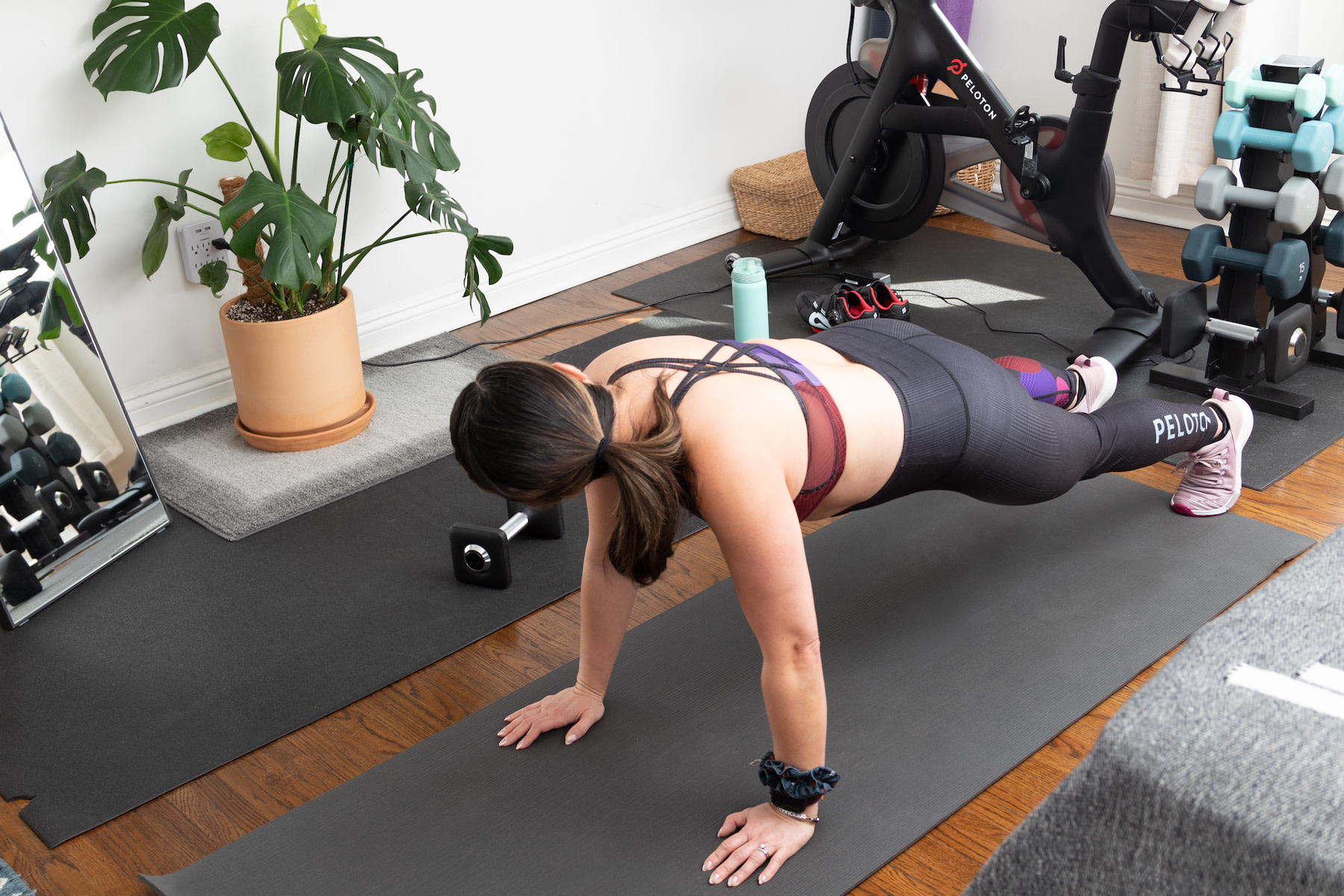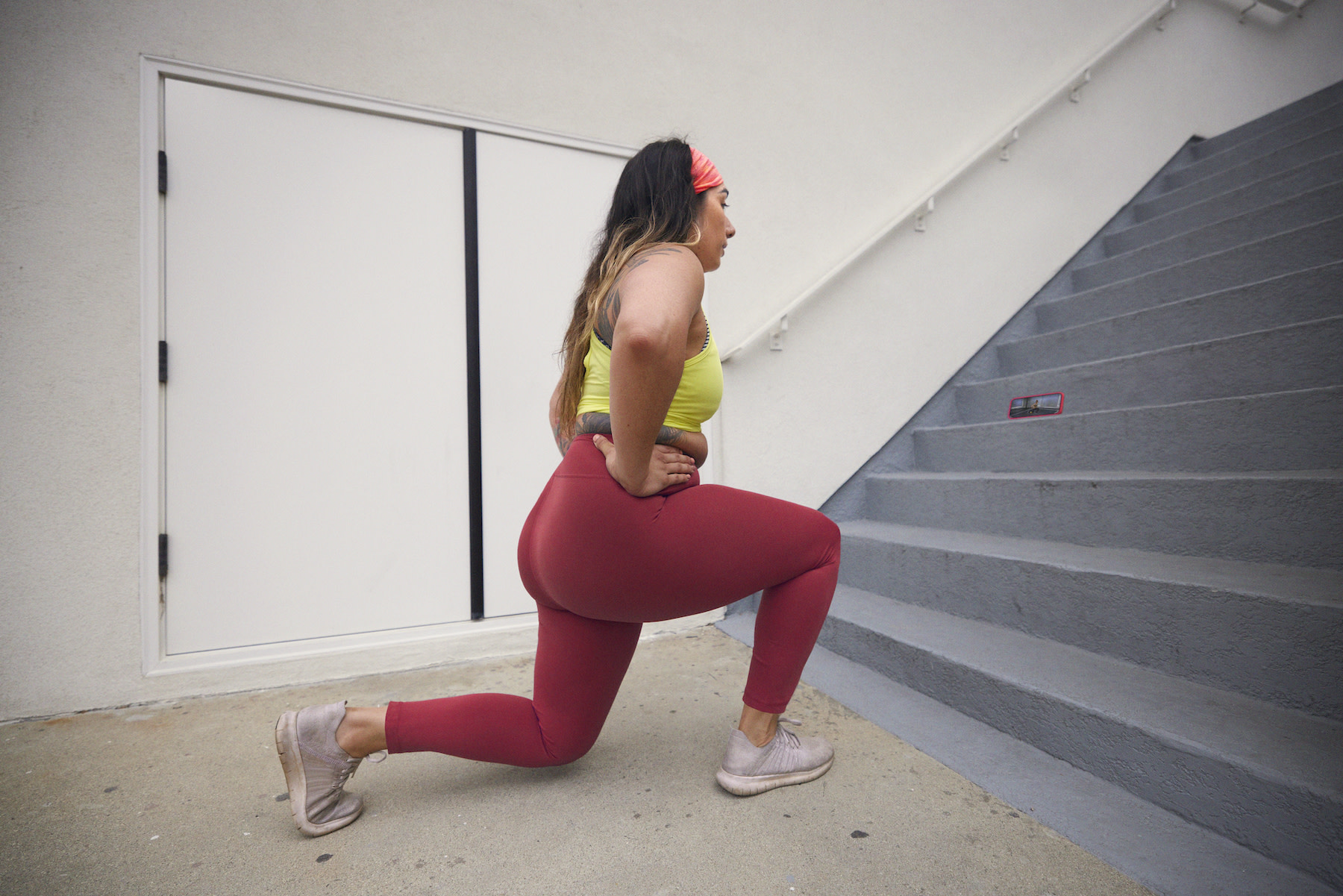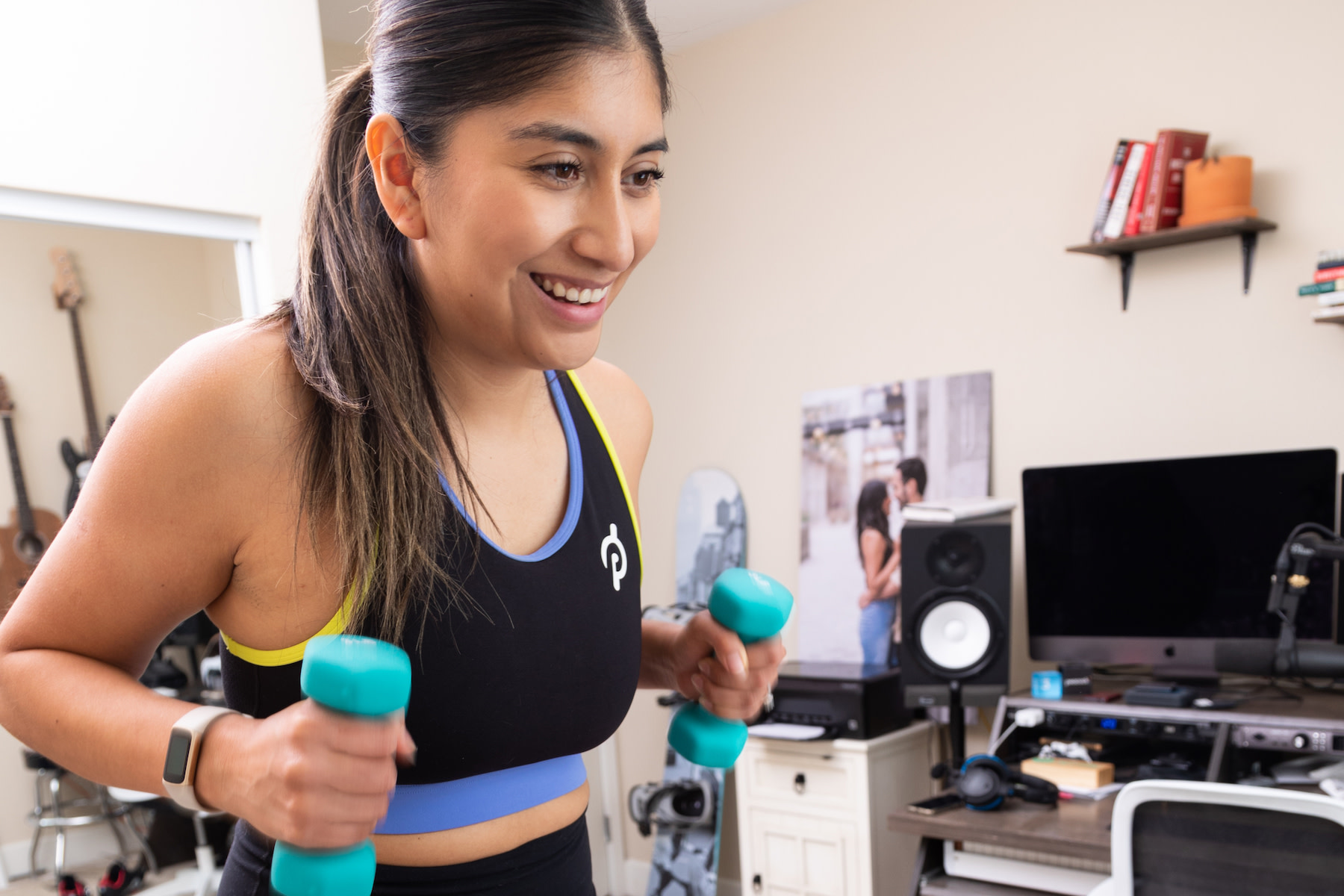What Is Muscular Endurance?
Why Is Muscular Endurance Important?
How to Improve Muscular Endurance
How to Measure Muscular Endurance Progress
Effective Exercises for Muscular Endurance
How Often Should I Perform Muscular Endurance Workouts?
Whether you want to run a marathon or run errands with good biomechanics, muscular endurance training should be part of your workout routine. Focusing on higher repetitions and lower weights than traditional forms of strength training, it’s an accessible form of cross-training that has the potential to improve your athletic performance, prevent injury, and keep you healthy for decades to come. We talked to Peloton instructor Joslyn Thompson Rule to find out exactly what muscular endurance means, why it matters, and how to get started with it.
Discover more ways to reach your goals with Peloton
What Is Muscular Endurance?

Muscular endurance is your muscles’ ability to exert force against gravity or against resistance over a period of time. Whether you’re moving just your body weight, swinging a kettlebell, or carrying a laundry basket, your muscles contract every time you move—and the greater their endurance, the longer they can keep going.
The specific role muscular endurance plays in your workout depends on what you’re doing, says Joslyn. “In strength training, muscular endurance is how many times you can complete an exercise before fatiguing.” In other words, the greater your muscular endurance, the more lunges, push-ups, or squats you could do before you had to take a break. “Improving your muscular endurance boosts your muscle fibers’ ability to keep firing for longer periods of time, which allows you to go longer, faster, or both, without exerting more effort,” says Joslyn.
While improving your cardiovascular endurance and improving your muscular endurance both improve your ability to keep going before you have to slow down or stop, they’re not exactly the same. “Muscular endurance is the ability of your muscles to continuously work without fatigue, while cardiovascular endurance is the ability of your heart and lungs to deliver oxygen to your working muscles,” says Joslyn.
To build your muscular endurance, you have to approach your workouts differently than if your sole goal is cardiovascular endurance.
While developing cardiovascular endurance generally depends on gradually extending the duration of your workout, building muscular endurance requires resistance training that focuses on higher repetitions and lower weights. (More on that later.)
Muscular Strength vs. Muscular Endurance
While muscular endurance certainly has a lot of overlap with muscular strength, and both are related to muscle performance, they have some important differences.
Muscular Strength
Muscular strength refers to how much force you can generate at once. For example, your one-rep max for a squat, bench press, deadlift, or overhead press is a measure of the muscular strength of the muscle groups performing those movements.
Muscular Endurance
Muscular endurance, on the other hand, refers to your ability to sustain repeated muscle contractions over time. Muscular endurance is the number of times you can lift a submaximal load, explains Joslyn, adding that your submaximal load should be 50 percent or less of your one-rep max. The heaviest load you can squat one time is 150 lbs, your muscular endurance would be a measure of how many times you can squat 75 lbs or less. To build your muscular endurance, you’d focus on increasing the number of reps you can complete with a 60 to 75 lb. load.
Why Is Muscular Endurance Important?
Improving your muscular endurance won’t just improve your athletic performance; it also improves your posture, makes you a more durable athlete, and confers health benefits that allow you to continue to do everyday activities for years to come. “Improved muscular endurance ensures you can maintain good during activities like running, rowing, and cycling, for extended periods of time. Plus, it reduces your risk of injury,” says Joslyn.
As she explains, “Sports require good quality movement throughout.” Say, for example, you’re a runner with a weak core. As you fatigue, you begin to slouch, which over time, can create imbalances throughout the rest of your kinetic chain, that can lead to aches and pains. And those aches and pains can become injuries if you’re not careful. On the other hand, a strong core will help you maintain good form, even as you fatigue.
Research shows improvements in muscular endurance can also boost performance. A study divided well-trained cross-country skiers into two groups. Both groups continued their low and moderate intensity ski training, but one group replaced their twice-a-week high-intensity sessions with interval running, while the other group replaced one high-intensity session with an interval run and replaced the other with muscular endurance training. After six weeks, the skiers who included muscular endurance in their training performed better in a 1,000-meter time trial.
A small study found that healthy adults who weren’t necessarily trained athletes experienced better endurance as a result of muscular endurance training. After four weeks of training, subjects’ muscles continued to fire at the same rate, even as the duration increased.
If you’re still not convinced of the benefits of improving your muscular endurance, consider the positive impact on your health and longevity. A meta-analysis of adults with type 2 diabetes found that muscular endurance training was associated with more stable blood sugar levels as well as better muscular strength and decreases in waist circumference and body fat. The study authors said the benefits were comparable to aerobic training, calling it a “potent” intervention.
Build Muscular Endurance with the Peloton App
See all classesHow to Improve Muscular Endurance
“Muscle endurance is muscle group specific,” says Joslyn. So if you want to run a marathon, focus on lower body exercises, not overhead presses. On the other hand, if you’re a server carrying heavy trays across a large dining room all night long, your time would be better spent strengthening your upper body.
Once you know which muscle group you’re targeting, choose a set of relevant exercises and incorporate them into your routine at least once or twice a week. Want to take the guesswork out of choosing exercises? Give your strength training workouts a major upgrade with the Peloton Strength+ workout generator or a program from your favorite instructors.
Whether you do them on their own or as part of your aerobic workout (e.g. running or cycling), depends on your preference and time constraints. “You could absolutely do them as a stand-alone workout, but in the interest of time efficiency I would generally group them alongside another workout,” says Joslyn.
If you choose to stack your muscular endurance workout on top of your cardio, you’ll be better off tacking it onto the end of a low to moderate-intensity session. “The light load means that they won’t be super taxing and that you should still be able to get some good quality movement in, without taking away from your main workout,” explains Joslyn.
Starting your muscular endurance training when you’re already fatigued from a hard cardio session can set you up for injury, according to Joslyn. “I probably wouldn’t do them after a super intense workout so that you can maintain good form throughout,” she explains.
On the other hand, there’s some data to suggest you might want to do your resistance training when you’re already fatigued from aerobic training. A small study published Journal of Strength and Conditioning Research found that, when compared to women who completed resistance training separate from aerobic training, those who interspersed aerobic training with resistance training experienced more significant gains in six out of nine training metrics, including lower body muscle endurance, and decreases in body fat. Ultimately, your goals and experience level may dictate when you decide to strength train.
How to Measure Muscular Endurance Progress
While there are a variety of ways to test your progress, it’s best to make sure your assessments are both simple and aligned with your goals. According to Joslyn, a runner or cyclist would be better off testing lower body muscular endurance using moves like squats or lunges, as opposed to pushups, which largely test your upper body and core.
She suggests starting off with two to three sets of 10-15 reps of a given exercise and aiming to increase to three sets of 15-25 reps over a period of six to eight weeks. Your “test” can be as simple as recording your workouts in a notebook or on your phone and checking your progress every month or two. You can also repeat a strength benchmark class on the Peloton App to check in on your gains.
Effective Exercises for Muscular Endurance

For sports that rely on lower body muscles, such as running and cycling, lunges are a great option, says Joslyn. If that movement is new to you, she advises starting with bodyweight only, adding weight only once you’re comfortable with the movement and confident that your form is good. (The last thing you want is to overdo it and take time off from your training to nurse an injury.)
She also suggests trying a couple of different variations, including a reverse lunge (stepping one leg back instead of forward) and a split squat (a static lunge where your feet stay planted in place). To get started, she suggests getting comfortable with completing two to three sets of 10 to 15 repetitions of a given movement and resting for a minute between sets. If you’re experienced with lunges, try it with a weight that makes the movement feel challenging for the last two to three reps of each set. “This can take a little experimenting but over time you will know what feels good,” says Joslyn.
Meanwhile, building a strong core is an essential aspect of improving muscular endurance that translates to performance gains in any sport. In addition to helping with balance, injury prevention, posture, a stronger core means you can transfer power more efficiently.
Here’s a quick overview of how you could approach a few different exercises:
Squats
Squat 10-15 times (This is one set.)
Rest 30-60 seconds
Repeat two to five times
If you use weights, choose a weight that feels challenging for the final two to three repetitions of each set.
Variations include bodyweight squats, dumbbell squats, goblet squats, and sumo squats
Lunges
Perform 10-15 times on each side (This is one set.)
Rest 30-60 seconds
Repeat two to five times
If you use weights, choose a weight that feels challenging for the final two to three repetitions of each set.
Variations include reverse lunges, split squats, side lunges, and curtsy lunges
Planks
Hold a high plank or forearm plank for 30-60 seconds
Rest 30-60 seconds
Repeat two to five times
Variations include side planks, plank with shoulder tap, and plank with hip dip
Pushups
Perform 10-20 pushups
Rest 30-60 seconds
Repeat two to five times
Variations include wall pushups, knee pushups, wide grip pushups, and incline pushups
How Often Should I Perform Muscular Endurance Workouts?
When it comes to the frequency of your muscular endurance training, more often isn’t necessarily better. A 2018 metastudy analyzed 74 experimental groups from 12 studies. The researchers found no significant correlation between the number of times people trained per week and their performance. In fact, those who trained only once a week experienced similar results to those who trained three or more times per week, when the total training volume was factored in. In other words, you’re likely to see the same benefit from doing nine sets of 20 lunges once a week as you would from doing three sets of 20 lunges three times per week.
Whatever you do, don’t underestimate the importance of rest and recovery. “You need time off between muscular endurance sessions to give your muscles a chance to recover and adapt to the stress you placed on them,” says Joslyn. Generally, she suggests giving each muscle group at least 24 hours to recover before training it again.
This content is for informational and educational purposes only and does not constitute individualized advice. It is not intended to replace professional medical evaluation, diagnosis, or treatment. Seek the advice of your physician for questions you may have regarding your health or a medical condition. If you are having a medical emergency, call your physician or 911 immediately.
Level up your inbox.
Subscribe for a weekly dose of fitness, plus the latest promos, launches, and events.
By providing your email address, you agree to receive marketing communications from Peloton.
For more about how we use your information, see our Privacy Policy.














